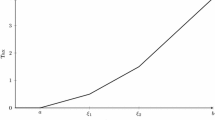Abstract
Using Computer Algebra Systems (CAS)-such as MAPLE-in teaching and learning mathematical concepts is a great challenge both from a didactical and a scientific point of view. We have to rewrite our traditional paper based teaching materials for interactive and living electronic worksheets, Only few statements and principles have to be acquired by the learner and the teacher from the CAS and after they can visualise, make animations modify quickly the program data, perform symbolic and numeric calculations step by step and in the whole, and verify deductions on their own. The author prepared Maple worksheets for teaching different types of function approximating techniques, such as interpolation-, least square-, spline and uniform approximation methods for post-graduate mechanical engineering students. In this paper we want to demonstrate how can we keep and improve the famous problem solving principles and rules given by G. Pólya and R. Descartes (Pólya 1962), when we use the capabilities of CAS. The education principles active learning, motivations and the successive phases are getting new meaning in the CAS. Our examples are always concerning with spline functions. Handling the formulas, calculating values and giving proofs are always in the form of Maple statements.
Kurzreferat
Benutzung von CAs im Lehr- und Leruprozess ist eine große didaktische und wissenschaftliche Herausforderung. Alle unsere didaktischen Prinzipien sollen in Hinsicht des Gebrauches von CAS neu durchgedacht werden. Auf der anderen Seite braucht man nur einige CAS Hilfsmittel zu erlernen, um ein CAS als ein leistungsfähiges Werkzeug zur Unterstützung der Modell-bildung. zur Visualisierung und bei numerischen und symbolischen Rechmungen einsetzen zu können.
Der Verfasser stellte Maple Arbeitsblätter für den Unterricht der verschiedenen Verfahren der Approximationstheorie zusammen. Diese Lehrmaterialen werden im Fermunterricht verwendet. Es wird versucht zu demonstrieren, wie erfalgreich Maple CAS emgesetzt werden kam, um die didaktischen Prinzipien von G. Polya und R. Descartes im Unterricht zu verwirklichen. Als Beispiel wählen wir immer Beispiele aus der Splinetheorie. Zur Bearbeitung benutzen wir immer Maple.
Similar content being viewed by others
References
Ward Cheney, David Kincaid, Numerical Mathematics and Computing, Brooks/Cole Publishing Company Monterey, California, (1980).
J. Li. Morris, Computational Methods in Elementary Numerical Analysis, John Wiley & Sons, (1983).
G. Pólya, Mathematical discovery, on understanding, learning and teaching problem solving, John Wiley & Sons, (1962).
Cs. Sárvári, Zur Möglichkeiten der flexiblen, transferreichen Erlernung mit Hilfe von CAS, p. 431–434. Beitrage zum Mathematikunterricht, 2002.




